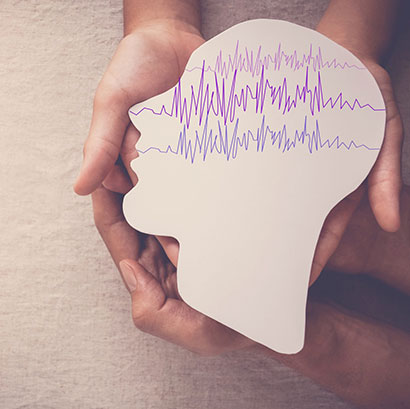Benign and Malignant Brain Tumors: What You Need to Know

February 14, 2020
The terms benign and malignant are used broadly when identifying tumors. Simply put, benign tumors are non-cancerous, while malignant tumors are cancerous. But there’s nothing simple about either when they occur in the brain, the most complex organ in the human body. While each type has unique characteristics, all brain tumors are serious and require immediate attention when detected.
What’s the Difference Between a Benign and Malignant Brain Tumor?
“That’s a hard question to answer,” says Joseph Landolfi, D.O., neuro-oncologist at JFK University Medical Center and Jersey Shore University Medical Center.
The reason is that benign and malignant brain tumors develop at different speeds, and they’re both dangerous. Patients are often relieved to hear that a tumor is benign because it’s a less severe diagnosis," says Dr. Landolfi.
But since they grow at a slower pace, benign tumors have time to create problems. For that reason, Dr. Landolfi refers to benign tumors as slow-growing. They impact the brain by pushing on parts that disrupt the way the brain communicates with the body, they have the tendency to come back even after being removed and they can develop into malignant tumors, he adds.
Malignant tumors, on the other hand, are fast-growing, more aggressive (synonymous with cancerous) and, depending on their origin, can infiltrate the brain or occur in multiple brain locations, Dr. Landolfi adds.
What to Know About Benign Tumors
The most common types of benign brain tumors are:
- Meningiomas: Meningiomas are common and originate in the central nervous system, which contains the brain and spinal cord. Though benign, they create serious symptoms, including headaches, speech problems and seizures, and they can even become fatal if untreated.
- Acoustic neuromas: Acoustic neuromas develop on the nerves that lead from the ear to the brain and can interfere with balance and normal facial muscle movement.
- Pituitary: Pituitary tumors form on the vital pituitary gland and disrupt the hormones responsible for essential bodily functions.
What to Know About Malignant Tumors
“Malignant tumors can be very aggressive locally, and you might even have multiple spots in the brain,” Dr. Landolfi says. The most common kind are metastatic, where tumors originate in other parts of the body like the lungs or breasts and spread to the brain.
What Causes Brain Tumors?
While there are direct connections between tobacco use and lung cancer, and sun exposure and skin cancer, Dr. Landolfi says there are no particular causes of brain tumors with few exceptions:
- Radiation treatment for other diseases has historically been associated with brain tumors.
- Though rare, some genetic syndromes can make you more susceptible to brain tumors.
- Brain tumors are slightly more common in men than women.
How Are Brain Tumors Treated?
Typical treatments for benign and malignant brain tumors include:
- Observation through imaging such as MRI scans at certain intervals
- Surgery to remove part or all of the tumor
- Radiation therapy that kills cancer cells
- Chemotherapy that kills cancer cells or stops them from growing or spreading
- Clinical trials when available
“Treatment doesn’t stop after a certain procedure,” Dr. Landolfi says. “Brain tumors always need to be followed with scans.”
Next Steps & Resources:
- Meet our source: Joseph Landolfi, D.O.
- To make an appointment with Dr. Landolfi or another provider near you, call 800-822-8905 or visit our website.
- Learn more about neurology services at Hackensack Meridian Health
The material provided through HealthU is intended to be used as general information only and should not replace the advice of your physician. Always consult your physician for individual care.
Seizure Disorders in Children

There are roughly 470,000 children with epilepsy, according to the Centers for Disease Control and Prevention.

Types of Headaches Explained by a Neurologist
What type of headache might you be experiencing, and what can you do about it? Our neurologist weighs in.

Differences Between Stroke and Brain Aneurysm
Strokes and brain aneurysms are similar but not the same, says neurosurgeon Yevgenia Shekhtman, M.D. They both can cause severe damage — even death.

7 Warning Signs of a Brain Tumor
Your chances of developing a cancerous brain or spinal cord tumor is less than 1 percent, according to the American Cancer Association. But that doesn’t always calm your fears when you’ve got a pounding headache.

Doctors Explain Fluorescent Guided Brain Surgery
It’s much easier to see where you’re going when your path is well lit, and the same can be said for removing brain tumors.
